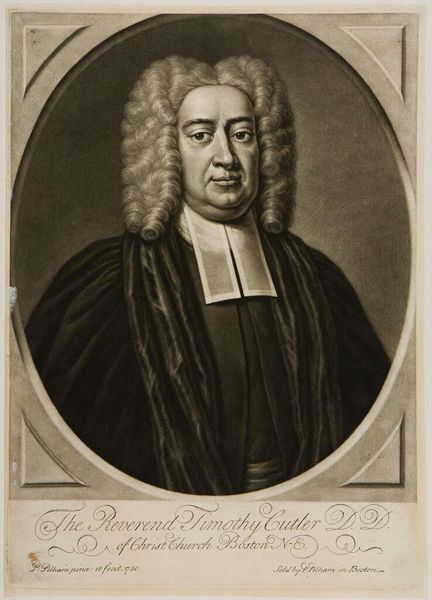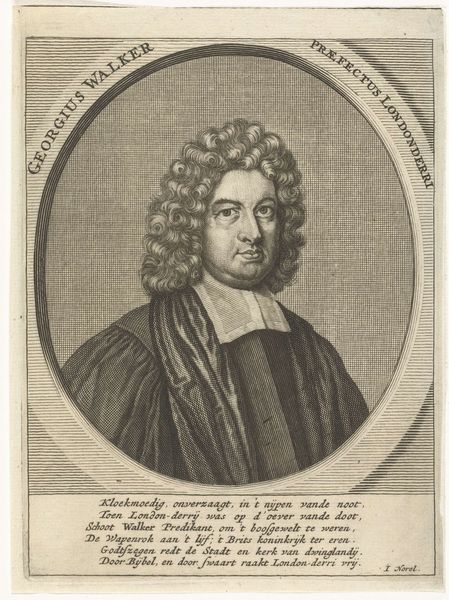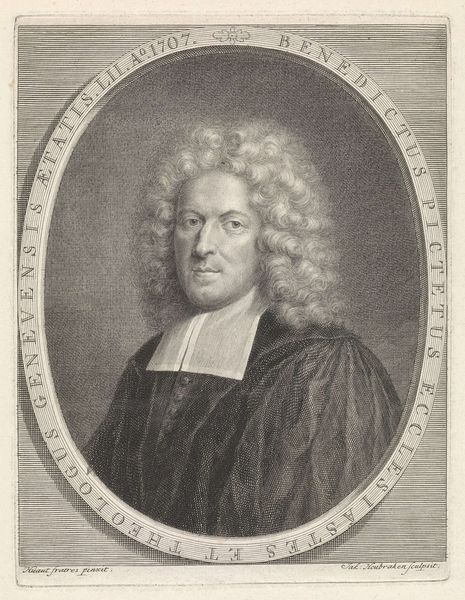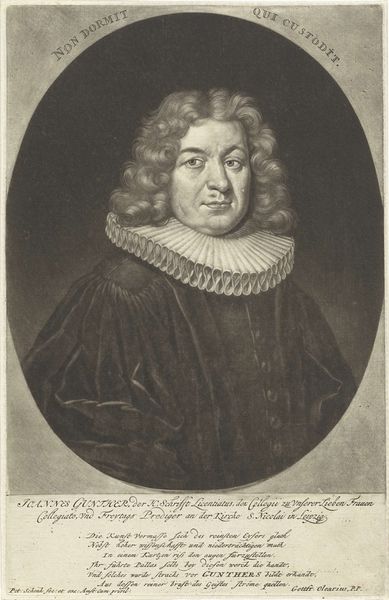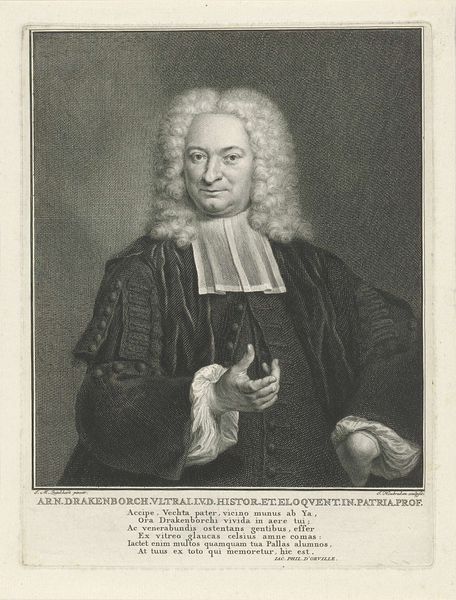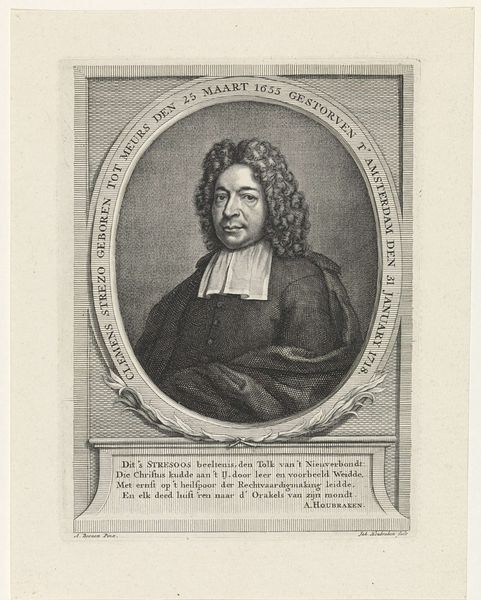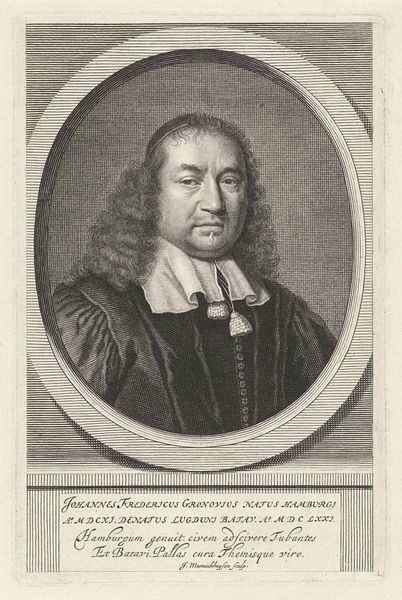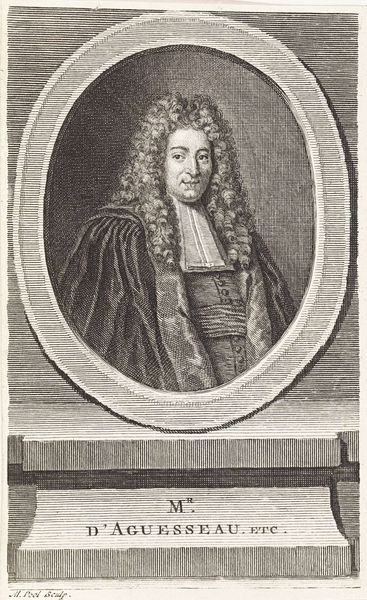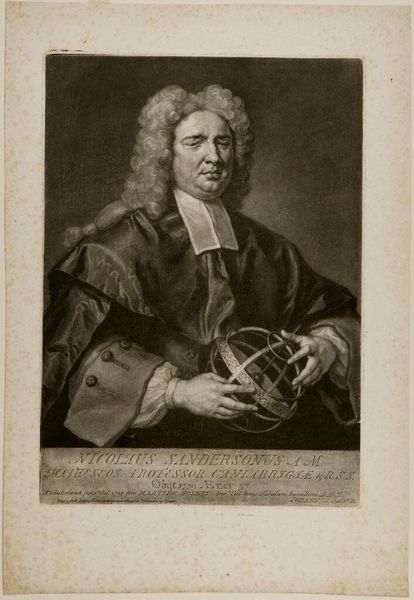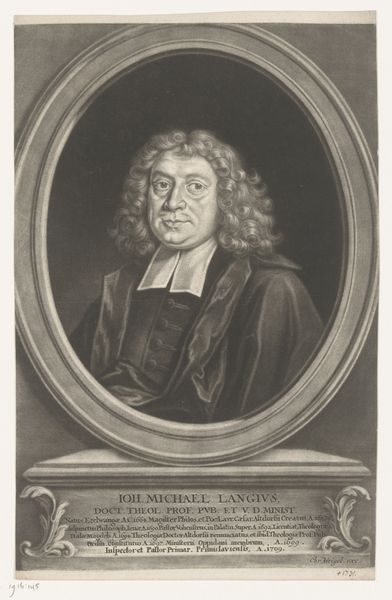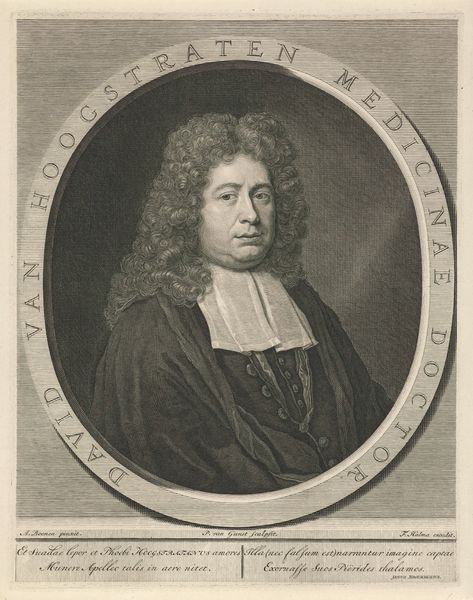
print, metal, engraving
#
portrait
#
baroque
# print
#
metal
#
old engraving style
#
portrait reference
#
engraving
Dimensions: height 255 mm, width 173 mm
Copyright: Rijks Museum: Open Domain
Curator: What a fascinating print. This is a portrait of Johannes Fritsch, a minister, etched and engraved by Pieter Schenk sometime between 1699 and 1713. It's housed here at the Rijksmuseum. It feels very Baroque in its formality, but also very stark in the absence of color. I’m curious, what stands out to you about this particular portrait? Editor: The interplay of light and shadow definitely grabs my attention. How Schenk manipulates these elements seems to dictate how we interpret Fritsch’s character. Curator: Indeed. Notice the rigorous application of hatching and cross-hatching. Schenk uses this method of carefully layering lines to give the work tonal richness and to suggest depth. How does the artist direct our attention and to what purpose? Editor: Well, the darkest areas are behind Fritsch and around the perimeter, especially the lower quadrants, drawing focus to his face and upper torso. It seems the very act of engraving here defines both form and also significance within that form. Curator: Precisely! Consider the intentional placement and weight of each line. Does this not convey the sobriety expected of a religious figure? Are we meant to infer additional information about this clergyman using only line, tone, and composition? Editor: So, beyond likeness, the method becomes a symbolic expression, where even the material contributes to the man's character. I never considered an engraving could be so expressive. Curator: Absolutely. The very structure of the engraving—the artistic choices—shape and deliver meaning just as profoundly as any likeness achieved. It is in this complex layering that the artistry resides, wouldn't you agree? Editor: I would! I'll never look at an engraving the same way again.
Comments
No comments
Be the first to comment and join the conversation on the ultimate creative platform.

